
Note: you will need to set aside 35–40 minutes for this time together.
You will need:
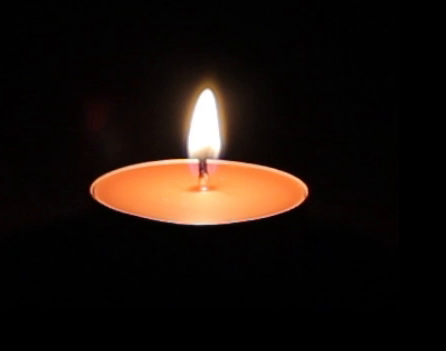
Now that same day, two of them were on their way to a village called Emmaus, twelve kilometres from Jerusalem. And it happened that as they were talking together and discussing it, Jesus himself came near and was walking with them.
When they drew near to the village to which they were going, he himself made as if to go on; but they pressed him, saying, ‘Stay with us! It is towards evening, and the day is almost over.’ So he went in to stay with them. Now while he was with them at table, he took the bread and said the blessing; then he broke it and handed it to them. And their eyes were opened and they recognised him … they had recognised him at the breaking of the bread.
This is the very famous story of the two followers of Jesus walking to the village of Emmaus after the death and resurrection of Jesus.
They were sad that Jesus had died on the cross.
By the end of the story, they were amazed that the resurrected Christ walked with them.
For us, the important part of the story is that Jesus breaks bread with his two followers and ‘their eyes were opened and they recognised him.’
The breaking of the bread wasn’t just the sharing of food. Rather, once again, Jesus shares himself with his followers in the ‘form’ of bread. Jesus did this at the Last Supper, then in the village of Emmaus, and this continues through to us today when we celebrate Mass together.
Later in this session, we will talk about and think about the important words and action that accompany the breaking of the bread (now the Body of Christ) and the pouring of the wine (now the Blood of Christ).
The very simple food and drink—the bread and wine—are changed into the Body and Blood of Christ and are shared.
Together, take a few minutes to think about and discuss the following ideas.
I wonder why Jesus used bread and wine.
I wonder why Jesus wants to feed us.
Our Mass has a particular shape—the second part of our Mass is the Liturgy of the Eucharist.
We believe the bread and wine become the Real Presence of Jesus.
Before we receive Jesus in Holy Communion, we join in prayer together.
The prayers remind us of our identity as children of God and members of the Body of Christ—members of the Church.
Our eucharistic celebration (the Mass) proceeds through four main actions, using the bread and the wine: take, bless, break and share.
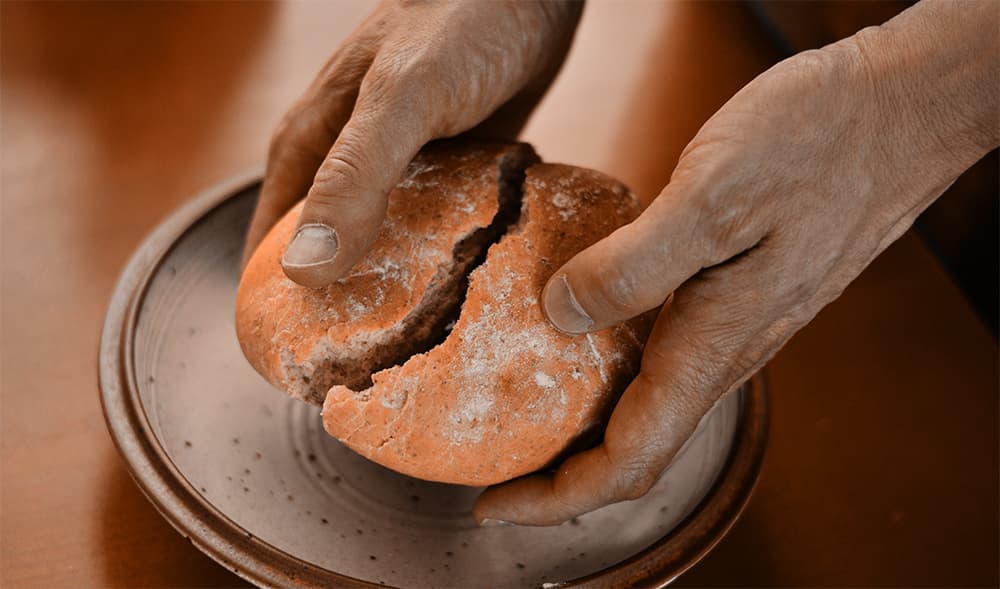
Following what Jesus did at the Last Supper , the early Church highlighted the actions of breaking the bread and pouring the wine, and then sharing them with the community of believers.
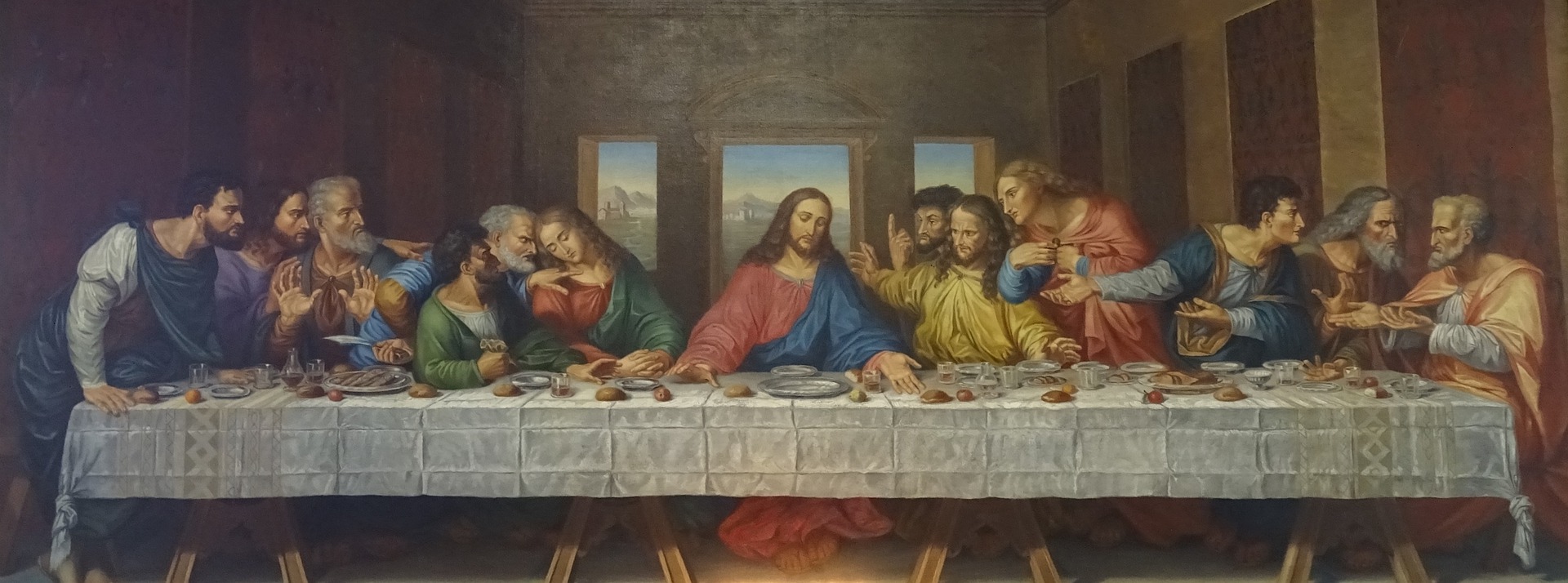
Breaking the bread and pouring the wine and then sharing them highlights the importance of the community’s participation in the life of the risen Lord, as well as their union with each other. We all share in the Eucharist.
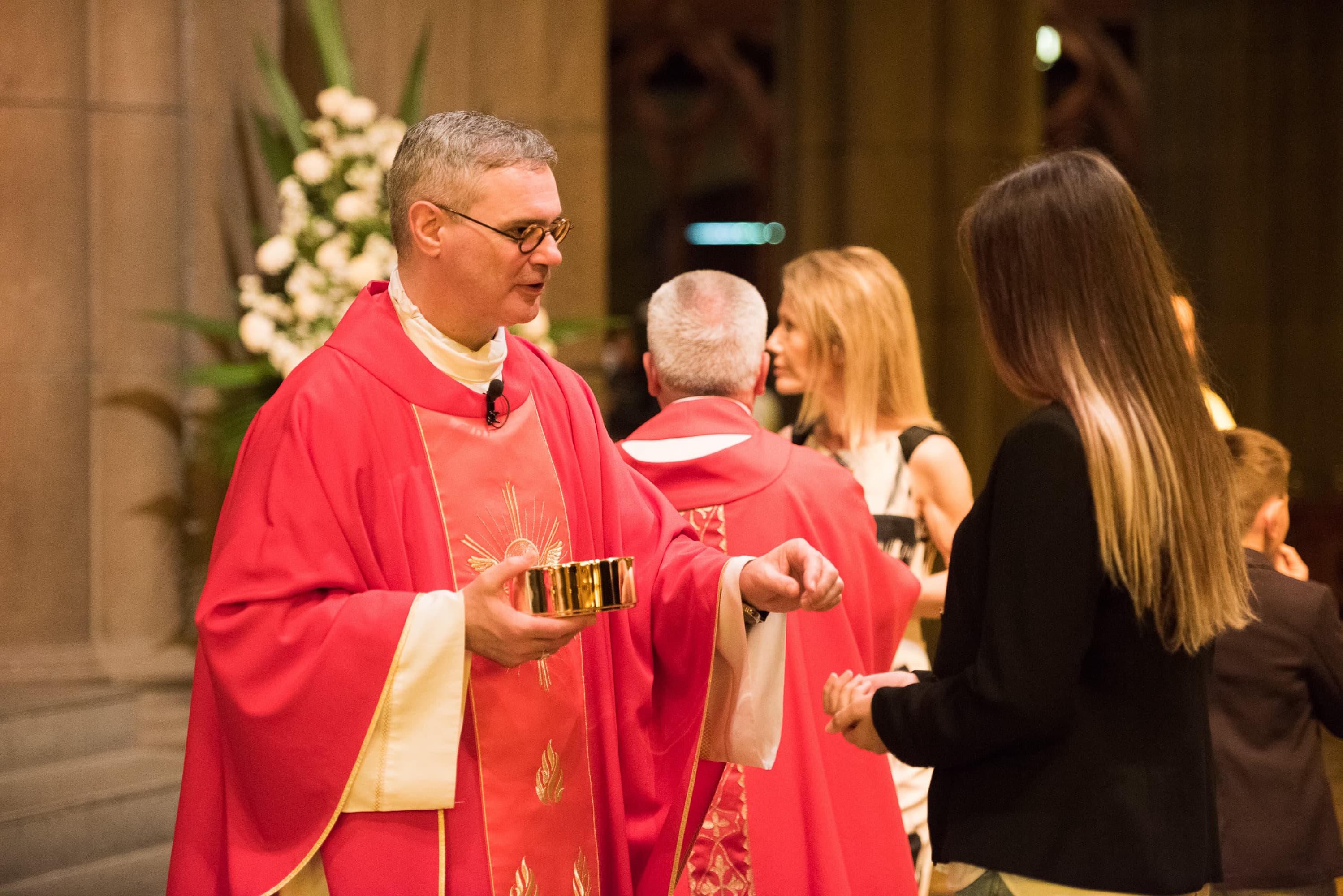
Since the breaking action belonged to Jesus—as we saw in the story of the Road to Emmaus—the breaking of bread was a way of remembering Jesus and making his life and words present.
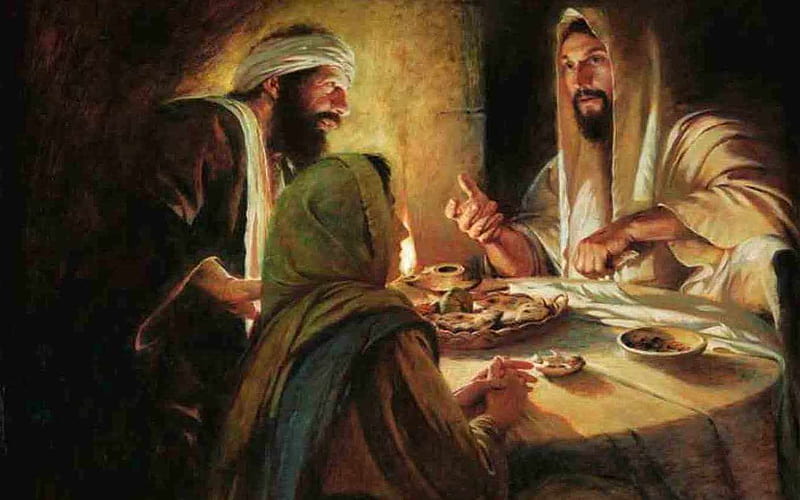
The word remembering is interesting to consider here. Re-member suggests that we become part of something again; we become members-once-more. In the Eucharist, we join again; we become members of Christ when we remember.
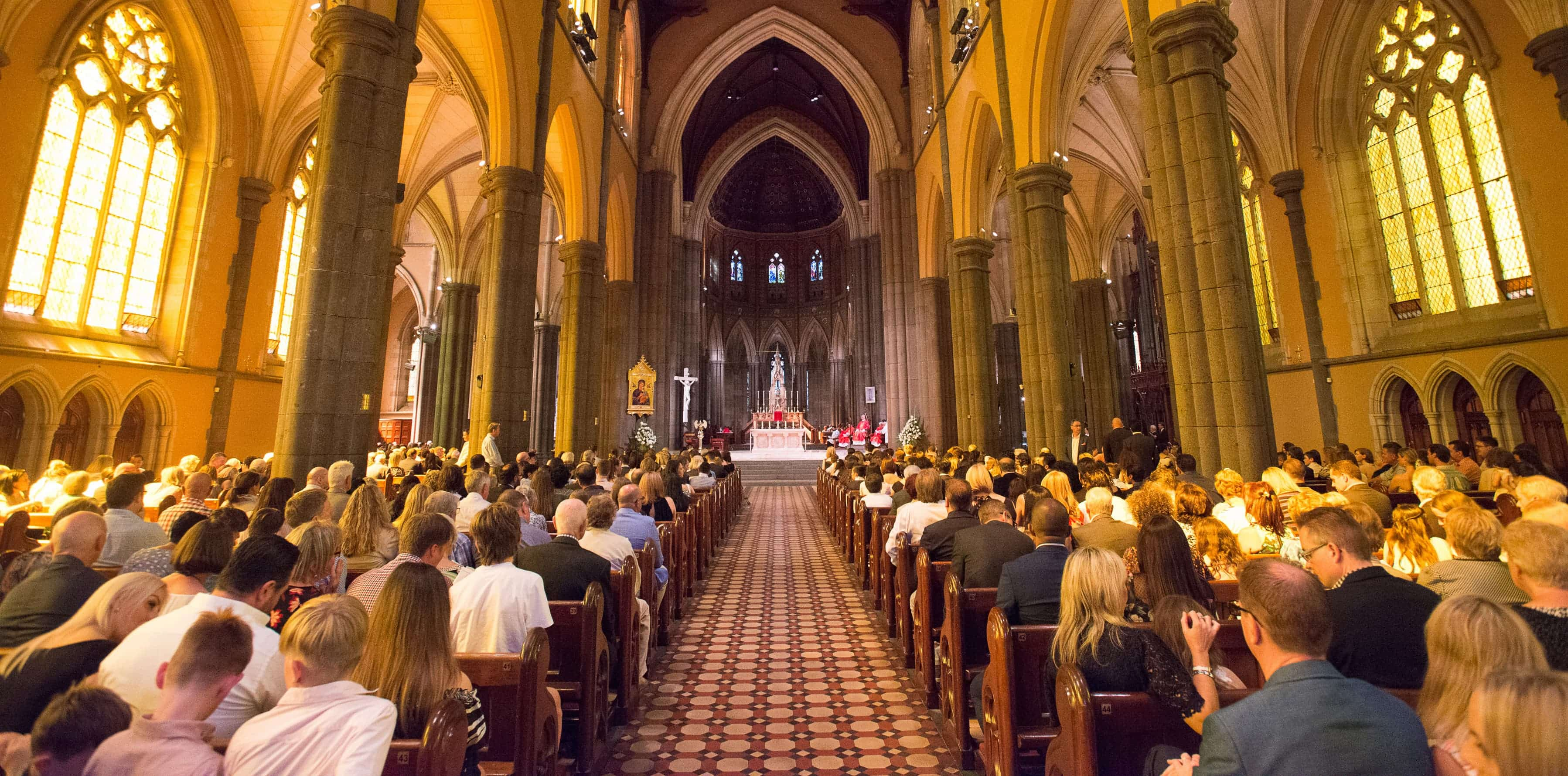
For the early Church, the action of breaking one bread also clearly signified that all are closely bound together in the Body of Christ—the Church.
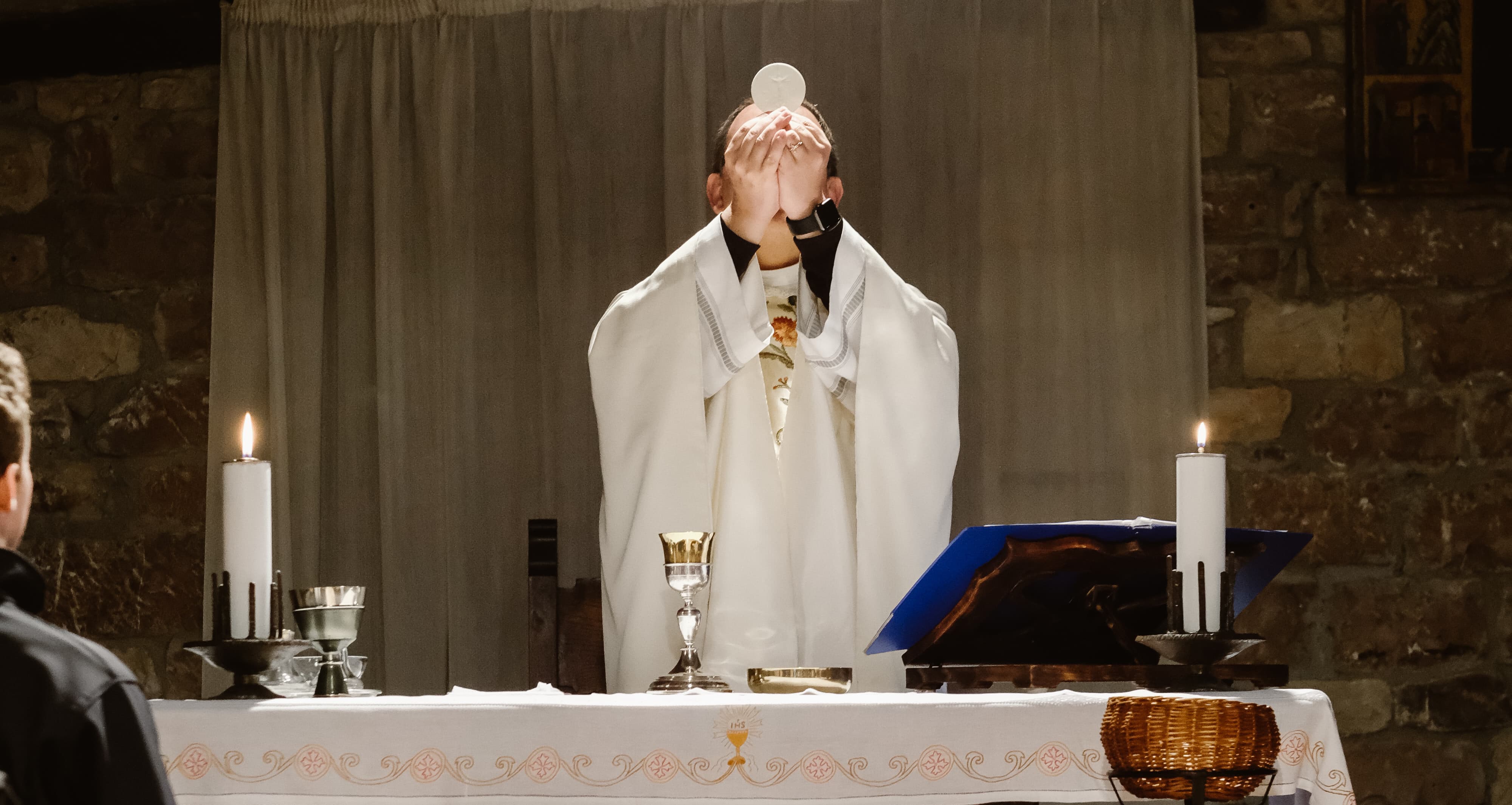
The story of the Emmaus disciples and their recognition of the risen Christ has a special moment: Jesus breaking the bread. The disciples recognised this gesture because they had seen Jesus do this before.
Sometimes in our lives we reach breakthrough moments: gaining a skill, achieving a goal or receiving an award, for instance. These moments can enable us to see something new.
Despite walking alongside Jesus for a number of years, the Emmaus disciples did not recognise the risen Jesus. It was only when he broke the bread that they realised it was truly him.
Each week at Mass, in a way, we become those disciples at Emmaus. We recognise the risen Lord among us, at the breaking of the bread.
The bread we break is the Body of Jesus: God’s Word made flesh and broken for us on a cross on Calvary.
The wine we pour is the Blood of Jesus: God’s Word made flesh and spilt for us on a cross on Calvary.
The bread we eat and the wine we drink is Jesus, the Word of God, who rose from the dead and is with us now.
This is our prayer. Our prayer leads us to actions.
Christ has no body now, but yours.
No hands, no feet on earth, but yours.
Yours are the eyes through which Christ looks with compassion into the world.
Yours are the feet with which Christ walks to do good.
Yours are the hands with which Christ blesses the world.